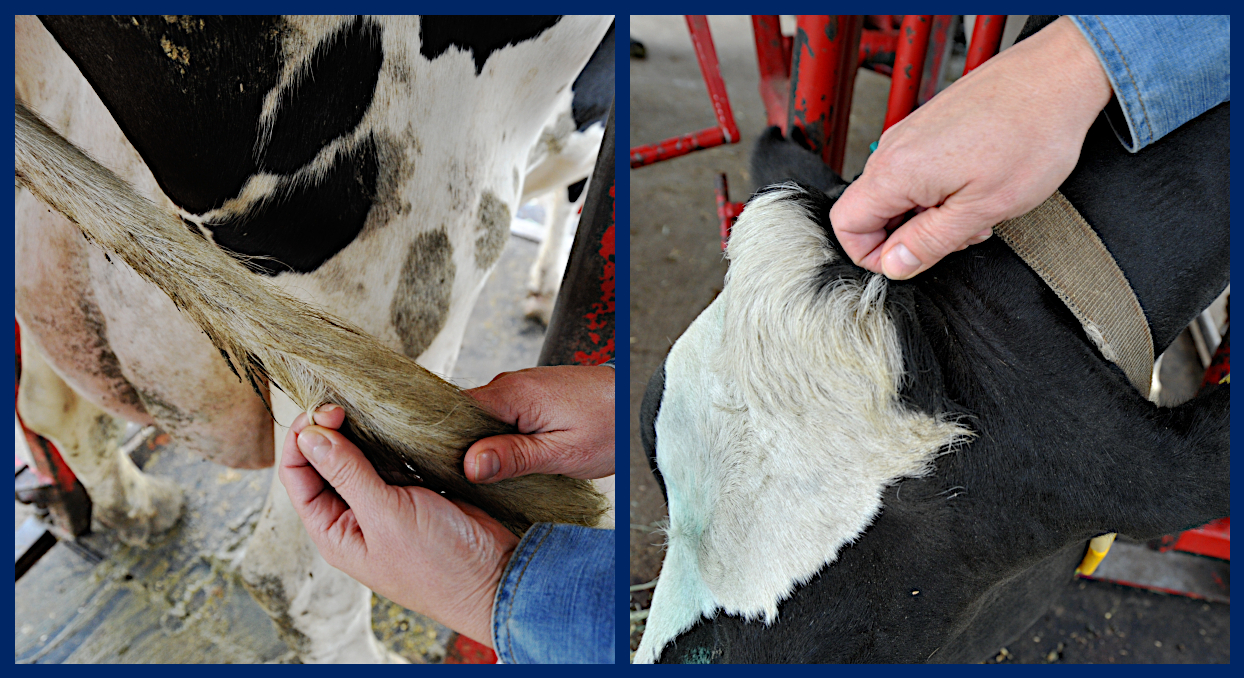Quick Summary
Click here for Price and Turnaround Time
Phenotype: Bulldog dwarfism in Miniature Zebu is a cartilage disorder characterized by disproportionate dwarfism, short, compressed vertebral column, a large head, and short, stocky limbs. Fetuses with this genetic defect are naturally aborted around the seventh month of gestation.
Mode of Inheritance: Autosomal recessive
Alleles: N = Normal/Unaffected, BDz = Bulldog dwarfism
Breeds appropriate for testing: Miniature Zebu, Dahomey
Explanation of Results:
- Cattle with N/N genotype will not have bulldog dwarfism and cannot transmit this bulldog dwarfism variant to their offspring.
- Cattle with N/BDz genotype will not be affected by bulldog dwarfism, but are carriers. They will transmit this bulldog dwarfism variant to 50% of their offspring. Matings between two carriers result in a 25% chance of producing a calf with bulldog dwarfism.
- Cattle with BDz/BDz genotype will have bulldog dwarfism. Fetuses with this genotype are expected to naturally abort.
Sample Collection
Most of the cattle DNA tests offered by the VGL are carried out using cells from the roots of a hair sample (roughly 20-40 hairs).
Hair samples should be taken from the switch of the tail, the poll, or the neck.

1. Clean (use comb if possible) tail switch, poll, or neck by removing all loose hair and foreign matter.
2. Use fingers or pliers to grasp approximately 8-10 hairs close to the skin and pull. Pull (do NOT cut) hair strands. Examine the end of hair strands for presence of root bulbs. Hair roots are necessary for DNA testing. If the majority of hair strands lack the root bulbs, discard hair and start again.
3. Repeat until you have approximately 20-40 hairs with root follicles attached.
4. Place the 20-40 hairs with root follicles attached in the envelope and seal with the animal’s ID written on the envelope. If hairs are long they can be taped to the submission form. Do not tape the roots.

5. Repeat steps 1-4 for each additional animal being sampled.
Note:
- Hair should be dry.
- If hair has excess dirt and debris, please brush out if possible before pulling hairs for sample.
- Do not cut the hair! The roots contain the DNA for testing.
- When sampling several animals in the same session, make sure that there are no hair strands in your hands to reduce the possibility of sample contamination. Clean hands and/or pliers if possible.
Inheritance of a form of generalized chondrodysplasia known as bulldog dwarfism has been documented in several breeds of cattle including Miniature Zebus. Among other defects, affected fetuses have severe disproportionate dwarfism, a short and compressed vertebral column, a large head, and short, stocky limbs. Fetuses with this genetic defect are naturally aborted around the seventh month of gestation.
A mutation in the cartilage development gene Aggrecan (ACAN) was identified as the cause of bulldog dwarfism in Miniature Zebu cattle. The mutation is one base pair insertion (ACAN:c.5686insC) in the sequence of exon 12 of the gene which results in production of truncated protein and loss of its critical function needed for normal bone and cartilage development. This mutation (named here BDz for simplicity) has an autosomal recessive lethal mode of inheritance. This means that both males and females are equally affected and that affected fetuses are not viable and are aborted later in pregnancy. Two other mutations (BD1 and BD2) in the same gene are responsible for bulldog dwarfism in Dexter cattle.
Testing for this bulldog dwarfism variant in miniature Zebus can help breeders determine if carriers are present among breeding stock and to use mating strategies to avoid producing affected calves. Breeding carrier animals together is not advised because this type of mating has a 25% chance of producing affected calves. The test can also be used by veterinarians to confirm bulldog dwarfism diagnosis of aborted fetuses.
Note: The Dexter bulldog dwarfism (BD1) variant has also been detected in Miniature Zebu cattle.
